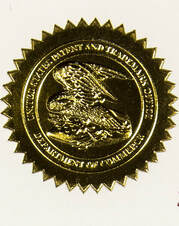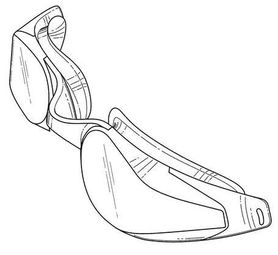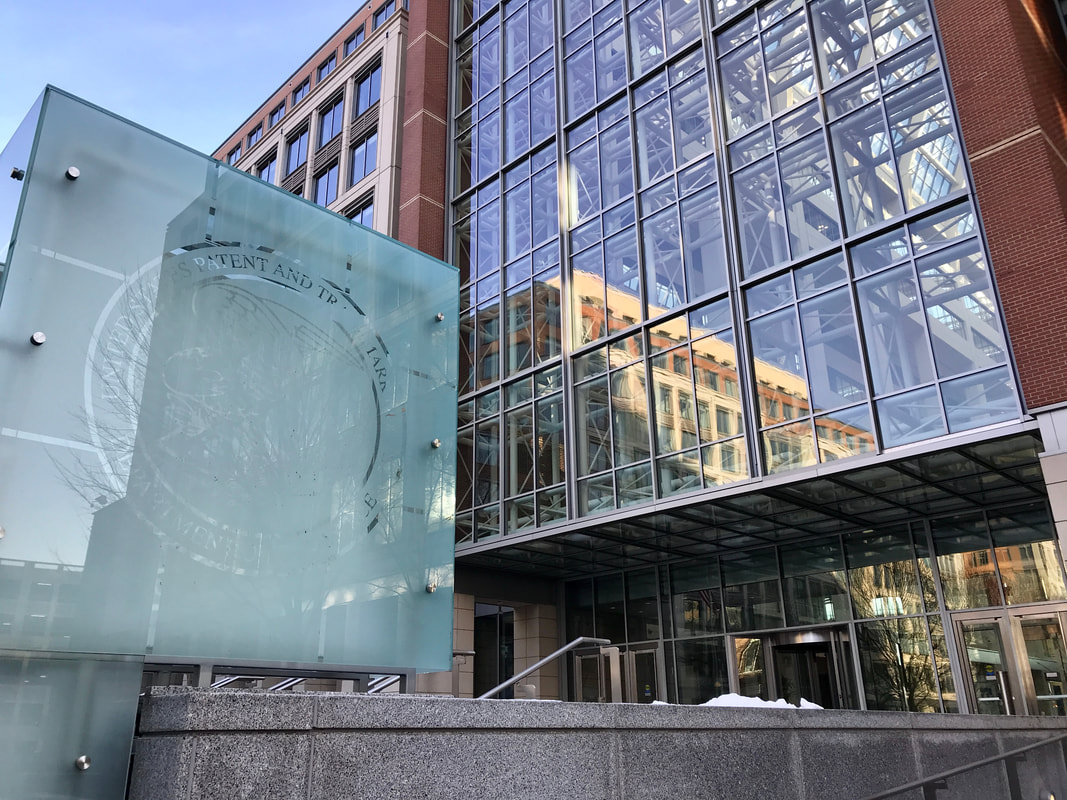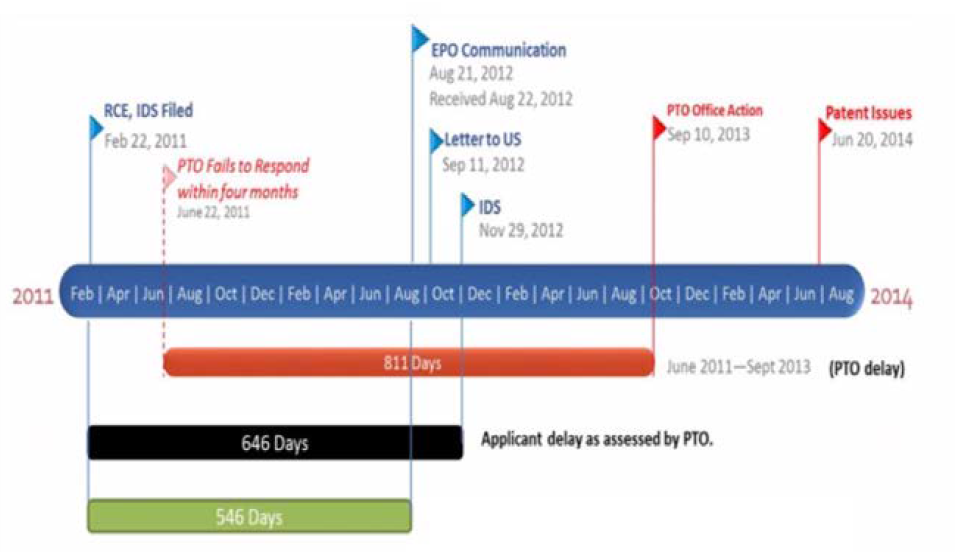|
The process of creating a new brand is exciting. Maybe the word or phrase immediately jumped to mind as the perfect way to identify your product or service. Or maybe you spent hours brainstorming to find just the right word or phrase to embody your brand. Now you are ready to launch, right?
“Hold on,” your attorney tells you, “we should do some trademark searching first.” What is a trademark search, and why should you do it? A trademark search is the process of gathering and evaluating information to assess two different aspects of a trademark:
Availability Trademark searching is important to see whether your proposed mark might infringe someone else’s rights. If the search uncovers a company that already uses or has a registration for that trademark, you can avoid potential lawsuits by choosing a different trademark before you hit the market. Searching can also illuminate a trademark owner’s policing strategy. If a company consistently enforces their trademark rights by opposing registration of similar marks and/or filing lawsuits to stop others from using confusingly similar marks, this can be a clear signal that you should avoid adopting a trademark that could be considered similar to theirs. Protectability Trademark searching can provide valuable information regarding whether your mark may be protectable through registration in your jurisdiction. A U.S. federal trademark registration gives you the ability to prevent others from using marks that are confusingly similar to your mark and is thus a valuable tool to protect your brand name. Trademark searching can uncover trends within the U.S. Patent and Trademark Office (USPTO) that may impact whether your proposed trademark might be registrable. For example, if the USPTO is refusing registration of similar marks based on a common theme (for example, because it has concluded that a term is merely descriptive and therefore not eligible for registration), you can expect a similar approach may be taken in your case. If trademark registration is important to you, then you can use this information to refine your mark. By conducting trademark searches, you can, in the long run, avoid investing in building brand identity in a trademark that is later objected to by another party, or refused registration by the USPTO. How are trademark searches conducted? If you type “trademark search” into an Internet search engine, you will find several companies that offer trademark searching services. However, here are two important things to remember:
Trademark searches should be tailored to your specific needs as a business owner. Beware of a one-size-fits-all approach to searching. Typically, a trademark search begins with a review of the trademarks recorded in the register of the jurisdiction at issue (such as the USPTO). Other possible parameters for a trademark search include:
In many countries, trademark rights are established by the first party to use a mark commercially, regardless of whether the mark is registered. These are referred to as “common law” trademark rights. Therefore, searching may include looking for such common law rights, which can be found on the Internet, in published articles, as part of business names, and the like. Trademark searches that include this level of detail are often referred to as “comprehensive” or “full availability” searches. Typically, searching can be done in two stages. The first stage can be referred to as a “knock-out” search, and it often involves searching trademark registers for identical (or near identical) marks. If a mark passes the “knock-out” stage, a more comprehensive trademark search can take a deeper dive to determine whether there are potential issues with your use and/or registration of the mark. Where to start? While you can do some initial investigating to determine whether others are using a particular brand name, it is important to hire a trademark attorney to conduct your trademark searching and clearance. An experienced trademark attorney can conduct a search that meets your needs and analyze the results for you. The following information is important to provide to your trademark attorney:
This information will assist your attorney in conducting an efficient and thorough trademark search. If you have any budgetary constraints, let your attorney know that too. Typically, the more comprehensive the search, the more expensive it will be. Similarly, if you want your attorney to review the results in detail, this will involve more time and expense. While it can be tempting to jump right in with a new trademark and begin using it with your product or service, it is important to vet that trademark before you adopt it. It is much more difficult to change the brand name after product launch than to spend some time upfront to make sure the trademark is clear for your adoption, use and/or registration. Still have questions about trademarks? See some of my other trademark blogs or feel free to contact me.
0 Comments
The U.S. Patent and Trademark Office continues to provide tools and resources to inventors who have developed technology relating to COVID-19. On May 8th, the USPTO announced a prioritized examination pilot program for small and micro entities that file COVID-19 related patent applications. The pilot program allows qualifying applications to be taken out of turn for examination, without requiring the significant Track One fees. See my prior blog post regarding information about this program.
Today, the USPTO announced it has established a webpage with important information regarding the pilot program, including the new Certification and Request for COVID-19 Prioritized Examination form, PTO/SB/450. The pilot program will initially run until the Office has accepted 500 requests. After 500 requests have been accepted, the USPTO may extend the pilot program (with or without modifications) or terminate it, depending on the workload and resources needed to administer the program, feedback from the public, and the effectiveness of the program. The USPTO webpage also includes guidance for filing the request to participate in the pilot program, as well as answers to common questions. This pilot program offers an excellent opportunity for small and micro entities to take advantage of accelerated examination, while exempting those inventors from the prioritized exam fees. Please feel free to contact me if you have questions or are interested in learning more about this new pilot program. USPTO Announces COVID-19 Prioritized Examination Pilot Program for Small and Micro Entities5/8/2020 Today the USPTO announced a pilot program that will grant requests for prioritized examination to applicants that qualify for small or micro entity status without payment of the typical fees due for this accelerated examination track.
This is a great opportunity for independent inventors and small businesses to accelerate the examination process of their patent applications without the high fees typically associated with the prioritized examination (Track One) process. Those fees can typically be in the range of $1,000 to $2,000 for small and micro entities. The pilot program will accept a total of 500 requests under this initial phase. After that point, the USPTO may decide to extend the pilot program, may modify the program, or may terminate it. To qualify for the pilot program, the following conditions must be met:
The objective of the pilot program is to complete, on average, the examination of an application within 12 months of special status being granted. The press release can be found here. The Federal Register Notice recommends practitioners use Form PTO/SB/450 to make the request for prioritized examination under the pilot program. Once that form is available, I will update the link in this article. Please feel free to contact me if you have questions or are interested in learning more about this new pilot program.  On March 31st, the United States Patent Office (USPTO) issued a Notice of Waiver of Patent-Related Timing Deadlines under the Coronavirus Aid, Relief, and Economic Security (CARES) Act. This waiver extends the time to file certain patent-related documents or fees which otherwise would have been due on and between March 27, 2020 and April 30, 2020. Deadlines and Fees Impacted The waiver applies only to the following:
Note the waiver does not apply to PCT or national stage filings, the deadline for filing a non-provisional application that claims priority to a provisional, or inter partes review petitions. The above due dates will be extended 30 days from the initial date the filing was due, provided that the filing is accompanied by a statement that the delay in filing or payment was due to the COVID-19 outbreak. Qualification A delay in filing or payment may qualify for the extension if a practitioner, applicant, patent owner, petitioner, third party requester, inventor, or other person associated with the filing or fee was personally affected by the COVID-19 outbreak, including, without limitation, through office closures, cash flow interruptions, inaccessibility of files or other materials, travel delays, personal or family illness, or similar circumstances, such that the outbreak materially interfered with timely filing or payment. USPTO Remains Open for Filing On March 16, the USPTO closed to the public until further notice. All Examiner interviews must be conducted remotely via phone or video. However, the Office is open for the filing of patent documents and fees through such means as the USPTO electronic filing system (EFS-Web), United States Postal Service by Priority Mail Express® or with a certificate of mailing, by hand delivery to the Customer Service Window, and facsimile transmission. The full Notice can be found here. Starting a new nonprofit organization is exciting. It can also be daunting, as you may wonder where to begin and how to find the right resources. It is important to set up your nonprofit organization correctly from the start, so you can avoid unnecessary delays and extra paperwork.
Here are key steps for starting your organization off on the right foot. Step #1 Choose a name for your nonprofit. At the very start, choose a name for your organization that reflects the intent and aspirations of your new nonprofit. Have an attorney verify that your name is available for you to adopt and use. You do not want to have to change your name because you find out later that someone else is already using it. Step #2 Incorporate your organization. In order to create your nonprofit as an entity, you need to incorporate it. This is accomplished by filing Articles of Incorporation with your state. Many states provide an online option for incorporating your organization, and it can be tempting to use this option for its apparent efficiency. However, typical online forms do not include the required language for a nonprofit to qualify as a tax-exempt organization under Section 501(c)(3) of the Internal Revenue Code. Therefore, it is best to not use the online form, but instead seek an attorney who specializes in nonprofit organizations to help you. The information you will need for incorporation includes:
There is a nominal filing fee charged by the state to record your Articles of Incorporation. Step #3 Obtain an Employer Identification Number (EIN). Your organization’s EIN is its social security number – it is the number that identifies your organization for all government filings. You obtain your EIN through the IRS website: https://www.irs.gov/businesses/small-businesses-self-employed/apply-for-an-employer-identification-number-ein-online The form must be completed by a person who controls, manages or directs the organization (i.e., the president). Upon completing the online form, you receive your EIN immediately. There is no charge for obtaining an EIN. Step #4 Open a bank account in the name of your charitable organization. Once you have your EIN, you should open a bank account in the name of your charitable organization. Keep records of the seed money used to open the account; if this is a loan to the organization, you will need to keep track of that fact and when it is repaid. If the seed money is composed of donations, track the source of those donations. Step #5 File Form 1023-EZ, “Streamlined Application for Recognition of Exemption Under Section 501(c)(3) of the Internal Revenue Code.” Have an attorney help you fill out the 1023-EZ, which is the application for recognition of exemption under 501(c)(3). This form is submitted online directly to the IRS and requires a $275 filing fee. If approved, the IRS will send you a Determination Letter with important information for your organization. Typically, you receive your Determination Letter within 2-4 weeks. The Determination Letter is a critical document for your organization – keep it with your core documents, as donors may ask to see a copy of it. Step #6 Draft Bylaws. Bylaws are an internal document that sets out the day-to-day operation of your organization. You can begin with simple bylaws that specify key facets of your organization, such as:
Your bylaws are not recorded with the state, but you should keep them with the other key organizational documents for your nonprofit. Step #7 Apply for Charitable Organization credentials with any state(s) within which you solicit donations. Each state regulates charities that solicit donations within their borders, and each state sets its own threshold for registering. The trigger here is where your donations originate. For example, if you have donors in Minnesota and Wisconsin, you will likely have to register in both states. Keep good records, and register in the required states. The filing fee for state registration is typically nominal. Step #8 Create an internal calendar system to track annual filing requirements with the IRS and state(s). Congratulations! After completing the above steps, your organization is recognized at the federal and state levels as a nonprofit, charitable organization. Each of these registrations will have ongoing, annual filing requirements in order to keep your registration. It is critical that you create an internal calendar system to track these requirements. The IRS has many helpful tools at: https://www.irs.gov/charities-and-nonprofits Your registration states will also have useful resources at their respective website. 2 Optional Steps… Customize your listing on GuideStar. Once you receive 501(c)(3) status, you will be automatically included in an online listing of over 2.7 million nonprofit organizations, run by GuideStar: https://www.guidestar.org/ GuideStar provides an online presence for your organization, and as much information as you would like to share on the platform. It also provides certification levels, as an indication of your transparency and is a useful marketing and fundraising tool. You can include a link to your website and “donate” button right on the GuideStar listing. Obtain a Certificate of Exempt Status (CES), which allows you to avoid paying sales tax on purchases for the nonprofit organization. If you will be making substantial purchases within a particular state, you may want to apply for a CES. You would present the CES to a vendor to avoid paying sales tax on purchases from that vendor. The application for a CES is typically done on the state department of revenue website. There is no filing fee. These steps can help make the process of creating your nonprofit organization a streamlined, enjoyable process. The key is staying organized and finding the right resources. Intellectual property (IP) is woven into the fabric of a business. Whether protectable via patent, trademark, trade secret or copyright, this property can be a valuable asset when properly maintained.
IP rights can be created before a business is formed. For example, advances in technology can give rise to patentable inventions, and company names and/or brand names can give rise to trademark rights. As a business develops and grows, these IP rights may grow and develop along with the business. It is critical to properly identify IP as it is created, and take continuous steps to protect the rights that arise with it. Failure to do so can compromise your rights. Many large companies have mechanisms in place to continuously monitor and secure IP rights. However, for many medium- and small-sized companies, and particularly start-ups, this task can seem daunting. In my practice, I have often observed companies of various sizes overlook IP ownership records – both for their own intellectual property, and for property they purchase from others. This has the potential to create complications for the IP portfolio, or in the case of trademarks, could even destroy rights. Here are 5 important steps your company can take today to maintain clear IP ownership records and maximize value: 1. Periodically review your business to identify patent, trademark, know how, and/or copyright that is valuable to your company. Depending upon your business, this review can take place at regular intervals to allow you to identify intellectual property before it becomes public. Decide how you want to protect that IP, keeping in mind that a combination of patent, trademark, copyright and/or trade secret may provide the best protection. 2. Obtain assignments promptly when IP is created. Employment contracts should include a clause obligating the employee to assign any IP created during their employment with the company. Under this umbrella obligation, there are certain triggers that should cause you to review ownership records for innovations:
3. When a business transaction occurs that may impact IP, do your due diligence to identify all IP impacted in the transaction. Take stock of all IP, including patents, patent applications, statutory invention registrations, trademarks (or service marks), trademark/service mark applications, copyright, trade secret and know how. Determine the scope of rights to be conveyed in the transaction, in terms of technology, geographic scope, market, and the like. Will this be a license or assignment? It is important to have intellectual property counsel assist you with the IP aspect of larger business transactions; your IP counsel can work with your business attorney so that IP aspects are adequately addressed in your overall agreement. 4. When a business transaction includes IP agreements (such as patent or trademark assignments), include those IP agreements as schedules, and have those IP agreements executed concurrently with the main business transaction. A separate schedule for each IP agreement is ideal, for reasons noted below. Executing all relevant agreements involved in an asset purchase (or other business agreement) at one time makes the entire process much more efficient, since the parties are at the table and executing the overall business transaction. If the IP agreements are put off until later, it may be more difficult to track down the required parties. 5. Record any IP assignments promptly with the relevant IP Offices. It is important to file assignment documents in the USPTO, U.S. Copyright Office, and other IP registries to maintain updated chain of title for all IP assets. The requirements of IP registries for recording assignment documents vary across jurisdictions, so you may need to coordinate with local counsel in each applicable jurisdiction to ensure the assignment documents comply with all formalities. For example, if the IP portfolio includes rights in foreign countries, you may need to engage counsel in each of those countries to assist with recording ownership rights. Once an assignment has been recorded in the USPTO, the records become public. Because of the public nature of assignment recordation, and the requirements unique to patent versus trademark assignments, I prefer to keep each agreement as a separate schedule. Recordation is a simple procedure, and it creates a public record that clarifies chain of title to the property. Careful monitoring of intellectual property rights and ownership records can help you maximize these important business assets. These 5 steps can be a good start.  As any inventor knows, obtaining a patent can be a long process. According to the U.S. Patent Office (USPTO) FY 2018 Performance and Accountability Report, the average time from the date an application is filed until it receives an initial patentability determination from the patent examiner is 15.8 months. On average, it takes almost 2 years (23.8 months) to reach a final disposition of your patent application – either allowance or abandonment. Actual times vary depending upon the art unit to which your application is assigned, and the nature of your technology. The USPTO continues to have a hefty backlog of unexamined patent applications – 522,149 at the end of FY 2018. Given this overwhelming caseload within the USPTO, it is understandable that examination can be a lengthy ordeal. However, in some cases, you may want your patent to issue quickly for business reasons. This article highlights 5 tools you can use to accelerate examination of your patent application. Each tool comes with special considerations. 1. General interview practice One method I routinely employ to streamline examination is to request interviews with Examiners assigned to my clients’ cases. When I began practice in the 1990s, this interview practice was done in-person or via phone. These days, it is most common to conduct interviews via phone or teleconference. Oftentimes, speaking with the Examiner to explore their objections can reveal pathways to allowance of a patent. This is the most cost-effective and efficient manner to expedite any patent case. The Patent Office does not charge any fee for interviewing a patent examiner. 2. Patent Prosecution Highway (PPH) Another cost-effective way to speed up issuance of a patent through the USPTO is to use the Patent Prosecution Highway (PPH). This tool is available if you have corresponding patent applications filed in countries outside the U.S. Under PPH, participating patent offices have agreed that when an applicant receives a final ruling from a first patent office that at least one claim is allowed, the patent owner may request fast track examination of corresponding claims in a corresponding patent application that is pending in a second patent office. In other words, if the European Patent Office allows your application in Europe, you can inform the USPTO about the allowance and ask the Office to fast track your U.S. case in light of the allowed European case. There is no fee to request participation in the PPH program. At the time of this writing there are well over 30 PPH participating offices, including the EPO, Canada, Australia, China, Germany, Japan, the UK, and New Zealand. One consideration for this program is that you need to certify that the claims in your U.S. application sufficiently correspond to the patentable/allowable claims from the other patent office. Therefore, you need to be satisfied with the claim scope you obtained in the first patent office. If you want to pursue different claim scope, do not use this option. 3. Track I – Prioritized Examination - $$ Prioritized Examination (PE) is a procedure whereby you pay additional fees to move your case up in line for examination. The USPTO will only grant 10,000 requests for PE within each fiscal year. To find out if this limit has been reached in the current year, and/or to see current program statistics, see the Patents Dashboard. For your application to be eligible for PE, it must include no more than 4 independent claims, 30 total claims, and no multiple dependent claims. If your case is a national stage entry, you will have to file a by-pass continuation application under 35 U.S.C. 111(a) that claims the benefit of the earlier international application under 35 U.S.C. 365 (national stage filings are not eligible per se). The Track I filing fees are $4,140, on top of the regular USPTO Patent Application filing fees due (Basic Filing Fee, Search Fee and Examination Fee). Small and micro entity fee reductions are available. If your application is accepted into the Track I program, the USPTO’s goal is to provide a final disposition within 12 months of prioritized status being granted. 4. Petition for Accelerated Exam – Additional filing requirements The Accelerated Examination (AE) program also aims to complete examination of an application within 12 months from the filing date of the application. Unlike the Track I option, however, this tool requires significant extra paperwork and case preparation. The most important feature of this option is the requirement that the patent applicant conduct a preexamination search of U.S. patents and patent application publications, foreign patent documents, and non-patent literature. In addition, you must provide an accelerated examination support document that includes:
There are several additional requirements regarding the documents that must be filed, and the amount and structure of claims for eligible applications. Thus, while this option does not include the additional filing fees required under Track I, the amount of time you will need to invest to prepare the required filing materials may meet or exceed the Track I filing fees. 5. Petition to Make Special – Circumstances This tool is available for patent applications within special circumstances, namely:
There is no additional fee for Petitions to Make Special, but you must prove the circumstances that form the basis for the petition. For instance:
These 5 tools may help you advance your patent application more quickly through the Patent Office. If your application is accepted into one of the programs, you may need to meet additional ongoing requirements during prosecution. The above information is fairly general in nature, and specific additional requirements may apply in your case. Consult with a registered patent attorney for more information about your individual case, and which tool(s) may be best for you.  It is important to thoroughly review the Patent Term Adjustment (PTA) calculation when your U.S. patent issues. This was illustrated in the Federal Circuit Court of Appeals decision yesterday in Supernus Pharmaceuticals, Inc. v. Andrei Iancu (January 23, 2019). Patent Term Adjustment (“PTA”) The term of a patent is 20 years from the earliest U.S. filing date. Because the term includes the period during which the application is pending before the PTO, the Patent Office has the authority to adjust the term of a patent by adding days to account for prosecution delays caused by the Office. Such adjustments are favorable to the patentee because they extend the life of the patent. Correspondingly, the PTO can reduce the PTA in order to account for delays caused by the applicant. Before delving into the details, the basic gist of the Supernus case involved a supplemental filing by a patent applicant, and the impact that filing had on the PTA when the patent ultimately issued. The supplemental filing was made to disclose information from a foreign counterpart application. By its nature, this information was unknown to the patent applicant (and indeed did not even exist) for a significant amount of time during pendency of the U.S. application. When calculating “applicant delays” to reduce PTA for the U.S. patent, the PTO counted the time from the date an RCE was filed by the applicant (which preceded the foreign action by 546 days), to the date the patent applicant disclosed it to the USPTO. This case discusses some fundamental questions relating to PTA: what counts as delay on the part of applicant, and how does the PTO calculate that delay? For each patent, the PTA determination is stated on the Issue Notification Letter. It is important to review that determination, and raise any objections, promptly. Supernus v. Iancu The case involved U.S. Patent No. 8,747,897, titled “Osmotic Drug Delivery System.” Supernus filed the application on April 27, 2006, followed by lengthy prosecution that included an RCE filed in February 2011, and ended with the ‘897 patent issuing on June 10, 2014. As is often the case, Supernus had a parallel European patent application pending. In that European case, a third party filed a Notice of Opposition on August 21, 2012. European counsel notified Supernus of the Opposition 21 days later, on September 11, 2012. On November 29, Supernus filed a supplemental Information Disclosure to disclose the Opposition and cited references to the USPTO. Relevant dates are shown here: In calculating term adjustment for the patent, the PTO reduced the PTA by 886 days for applicant delay. Supernus objected to 646 days that were assessed for the period between the February 22, 2011 RCE filing and the November 29, 2012 submission of the supplemental IDS. Thus, the entire period between the filing of the RCE and the supplemental IDS was counted as “applicant delay” against the PTA for this patent, despite the fact that the opposition did not even exist until August 2012. Supernus filed a request for reconsideration of the PTA, which the USPTO rejected. Supernus then appealed to the U.S. District Court for the Eastern District of Virginia, which ruled in favor of the PTO. The case was then appealed to the Federal Circuit. Supernus argued, and the PTO did not dispute, that Supernus could not have undertaken any efforts to conclude prosecution of the patent application during the 546-day period between the filing of the RCE on February 22, 2011, and the EPO’s notification of the European Opposition on August 21, 2012. The Federal Circuit stated the precise question before it was “whether the USPTO may reduce PTA by a period that exceeds the ‘time during which the applicant failed to engage in reasonable efforts to conclude prosecution.’” The Federal Circuit reversed the district court and agreed with Supernus. The Federal Circuit held: “On the basis of the plain language of the statute, we hold that the USPTO may not count as applicant delay a period of time during which there was no action that the applicant could take to conclude prosecution of the patent. Doing so would exceed the time during which the applicant failed to engage in reasonable efforts.” The Federal Circuit found the PTA statute imposed two limitations on the amount of time that the USPTO can use as “applicant delay” for purposes of reducing PTA:
Thus, the statutory period of PTA reduction must be the same number of days as the period from the beginning to the end of the applicant’s failure to engage in reasonable efforts to conclude prosecution. In the Supernus case, there was no action Supernus could have taken to advance prosecution of the patent during the 546-day period, particularly because the EPO notice of opposition did not yet exist. When reviewing PTA for your patent, it is important to confirm any reduction to the PTA is in fact equal to any period of time in which applicant has failed to engage in reasonable efforts to conclude prosecution. Particularly when your application involves foreign counterparts, any reduction should correlate to the specific time period during which applicant failed to engage in reasonable efforts to prosecute the application. Finally, although this case involved post-RCE filings, the principles of this case can apply to any supplemental IDS.  Yesterday, the Supreme Court unanimously held that an inventor’s sale of an invention to a third party who is required to keep the invention confidential may place that invention “on sale” under U.S. patent law, thus precluding patent protection of that invention. Helsinn HealthCare S.A. v. Teva Pharmaceuticals USA, Inc., 568 U.S. (2019). The case involved Helsinn Healthcare S.A., a Swiss pharmaceutical company that produces Aloxi, a drug that treats chemotherapy-induced nausea and vomiting. Helsinn entered into two agreements with MGI Pharma, Inc., a Minnesota pharmaceutical company that markets and distributes drugs in the U.S. The two agreements, executed in April 2001, included a license agreement and a supply and purchase agreement. Both agreements required MGI to keep confidential any proprietary information received under the agreements. Of note, the existence of the agreements was publicly disclosed, both through press releases and in SEC filings. However, the specific dosage formulations covered by the agreements was not publicly disclosed. Nearly two years after signing these agreements with MGI, Helsinn filed a provisional patent application covering the active ingredient in Aloxi. Helsinn subsequently filed other patent applications that claimed priority to the 2003 provisional. The case turned on the question of whether, under the Leahy-Smith America Invents Act (AIA), an inventor’s sale of an invention to a third party who is obligated to keep the invention confidential qualifies as prior art for purposes of determining patentability of the invention. The Supreme Court unequivocally answered “yes.” The text of the opinion is relatively short. In authoring the opinion, Justice Thomas first noted that every patent statute since 1836 has included an on-sale bar. Justice Thomas then turned to Supreme Court precedent and acknowledged the specific issue had not been addressed: “Although this Court has never addressed the precise question presented in this case, our precedents suggest that a sale or offer of sale need not make an invention available to the public.” Justice Thomas looked to Federal Circuit precedent as explicitly recognizing this implicit thread running through Supreme Court jurisprudence: "The Federal Circuit – which has ‘exclusive jurisdiction’ over patent appeals … has made explicit what was implicit in our precedents. It has long held that ‘secret sales’ can invalidate a patent.” Interestingly, the two Federal Circuit cases cited here go further than the Helsinn fact pattern, in that they involve sales that were kept completely secret. After reviewing statutory language and case law, Justice Thomas concluded that Congress did not alter the meaning of “on sale” when it enacted the AIA. Thus, in the Court’s view, this decision is merely following the law as it stands. Pharmaceutical and biotech companies often face this scenario, where they seek business partnerships to formulate, run clinical trials, and/or produce their products. In light of this decision, it remains critically important that patent applications be filed before such license and/or supply purchase agreements are executed.  Design patents can be valuable tools to prevent your competitors from copying your innovations and producing counterfeit products or knock-offs. As part of your intellectual property strategy, it might be advisable to protect your innovation with both design and utility patents. What is a design patent? As a lifelong swimmer, I will use this design patent obtained by Roka Sports, Inc. as an illustration of how to successfully use design and utility patent protection. This design patent issued in January 2018 for “Swimming Goggles with Retroscopic Lens.” As you can see from the example, the design patent includes one claim: “The ornamental design for swimming goggles with retroscopic lens, as shown and described.” The scope of the patent is defined by the design illustrated in the 7 figures within the patent. Design patents cover the appearance of an article. This means a design patent can cover the configuration or shape of an article, the surface ornamentation applied to an article, or the combination of configuration and surface ornamentation. To be protectable, the design must be a definite, preconceived thing that is capable of reproduction and not merely the chance result of a method. As I write this blog, over 2,800 design patents have been granted so far in 2018. Some examples of these design patents include: toys, lighting fixtures, faucets, golf clubs, automotive components (wheels, headlights, muffler, dashboards, etc.), cameras, display screens, cases for electronic devices (such as cell phones), tires, audio equipment (including microphones and speakers), jewelry, containers (such as bottles for beverages, floral containers, etc.), tools, and shoes. How is a design patent different from a utility patent? In contrast to the above, utility patents protect the way an article works. Keeping with the swimming goggles example, here is a recent Roka Sports utility patent. As you can see, the subject is swimming goggles with a retroscopic lens, but the description is much more detailed regarding how the goggles are made and used, and there are many detailed claims. The scope of patent protection is defined by the 32 claims of the patent. This Roka Sports example illustrates how you can use both design and utility patents to protect your inventions, so long as your innovation has both functional and ornamental characteristics. Some other main differences between design and utility patents include:
When considering how to protect your innovations, consider whether a design patent might be useful for you. Design patents can provide significant protection along with utility patents, trademark, copyright and trade secret. |
AuthorKarrie Weaver practices intellectual property, trademark, patent, and trade secret law. Archives
February 2021
Categories |
612.386.0565
Copyright 2021. Weaver Legal and Consulting LLC. | All rights reserved.
Website by RyTech, LLC
Copyright 2021. Weaver Legal and Consulting LLC. | All rights reserved.
Website by RyTech, LLC






 RSS Feed
RSS Feed